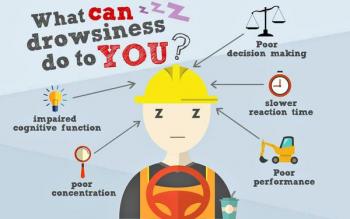Recently I was meeting with a team of union leaders and managers to discuss their shift schedules and our process for evaluating shift schedules and finding better alternatives. One of the things I often do during the introduction part of the meeting is to ask people to tell me what they want to discuss over the next couple of hours. In this meeting, one of the union leaders semi-jokingly said he wanted to know “when is the best time to sleep on shift?”ย
Well, that turns out to be a good question. Most of us have probably experienced the alertness boost resulting from a short duration nap. Studies have shown that both alertness levels and performance can improve when shift workers are allowed to sleep on night shifts.
Unfortunately, most organizations have no provision for sleeping on shift. The concerns raised are often around the manageability of the naps. Questions like:
- How do we ensure people come back to work?
- How do we keep people safe while they are napping?
- How do we ensure the nap rooms are only used for naps?
- What about sanitation?
- You mean you want me to pay someone to sleep!?
- If someone doesn’t need a nap, do we have to give them an extra break?
- If one person takes a nap, and another doesn’t, is that fair?
I have some ideas for addressing some of these concerns, though not all of them. To the question about paying someone to nap, my answer is: If a person needs a nap, you can’t afford NOT to pay them to take a nap. A single mistake can cost much more than a 20-30 minute break for a nap. Especially if the 20-30 minute nap time is created by combining a break period and a nap period.
Let’s ignore the “mistake avoided”ย benefit for a moment and do some quick math:
- Assume that a person working a 12-hour night shift is given 15 minutes of nap time that can be taken in conjunction with either a normal break or a lunch break. The extra time can only be used in the nap room.
- If a person uses their nap break in conjunction with their 30-minute mid-shift lunch, they will come back to their workstation with 5.75 hours of work to complete before their shift is over. Since that 5.75 hours includes another paid break, assume that they actually only have 5.5 hours of actual work time remaining. 5.5 hours x 60 minutes = 330 minutes.
- A 15-minute investment for the nap will require a 15 minutes/330 minutes or 4.5% improvement in productivity to break even.
Is a 4.5% productivity improvement feasible? That probably depends on the situation. If the work is self-paced, tedious, or intellectually challenging, the answer is almost always going to be “yes”ย. In many cases, the improvement will be significantly more than 4.5%, and the shift worker will be happier and safer.
Call or text us today at (415) 858-8585.



